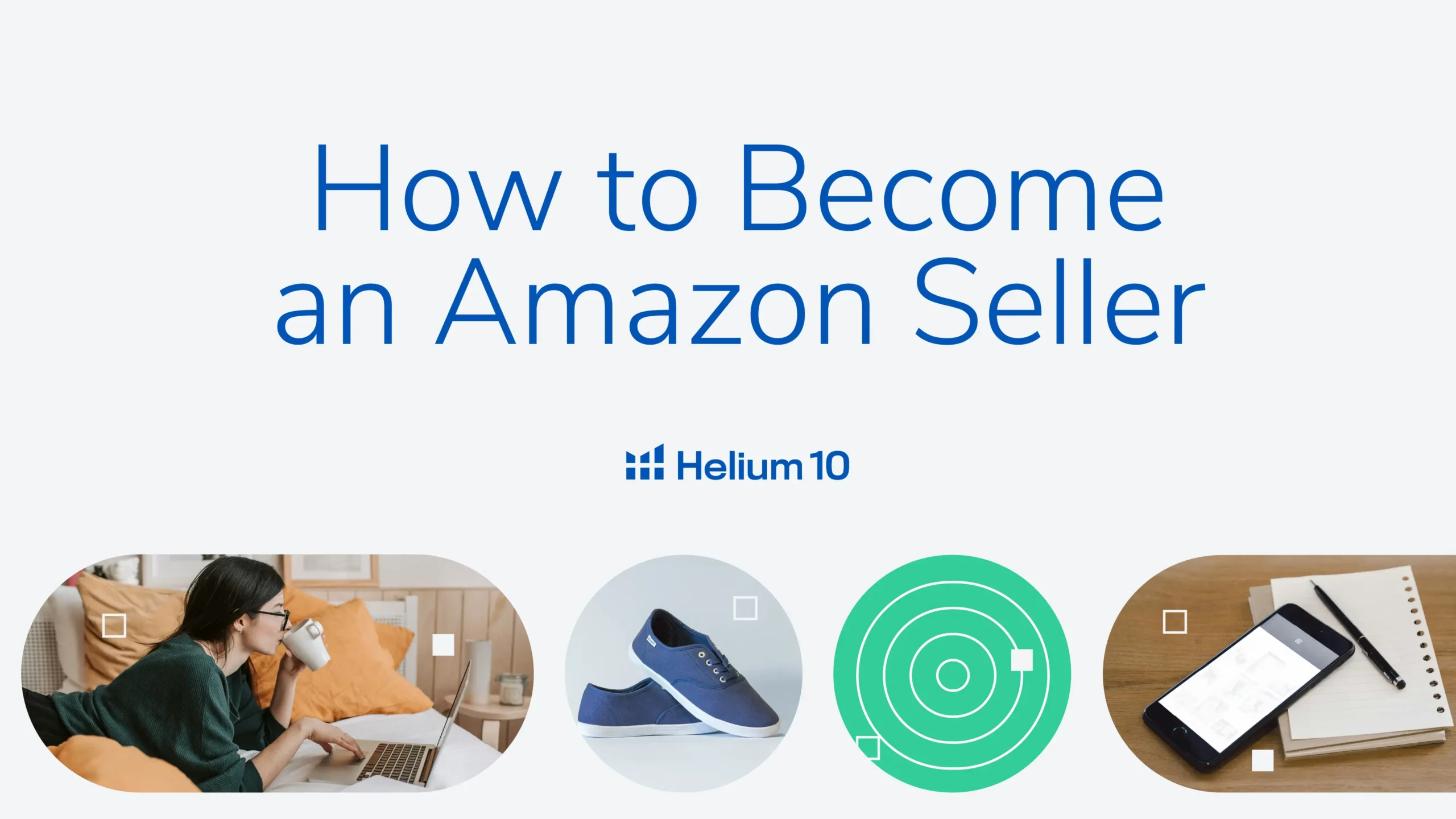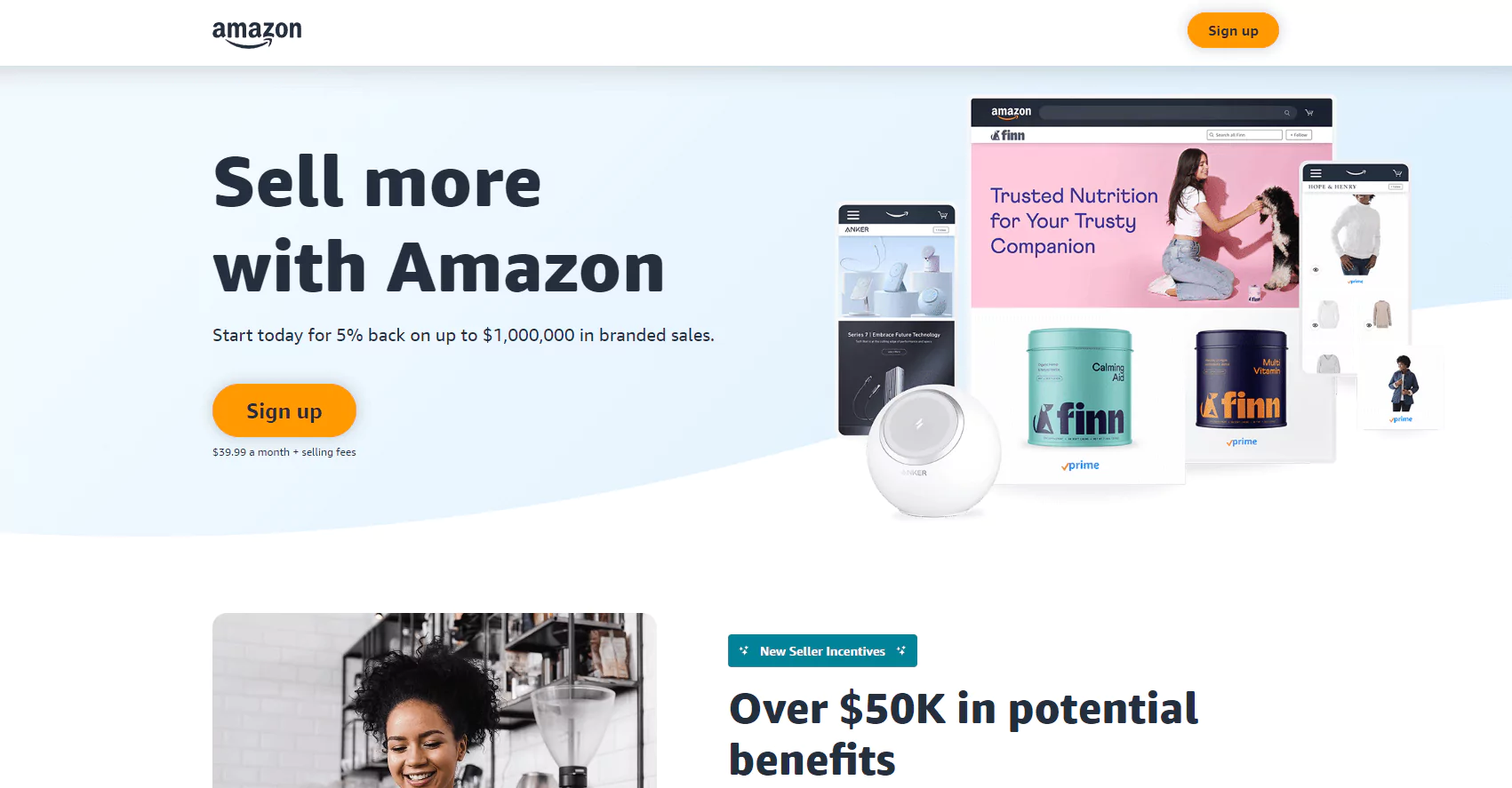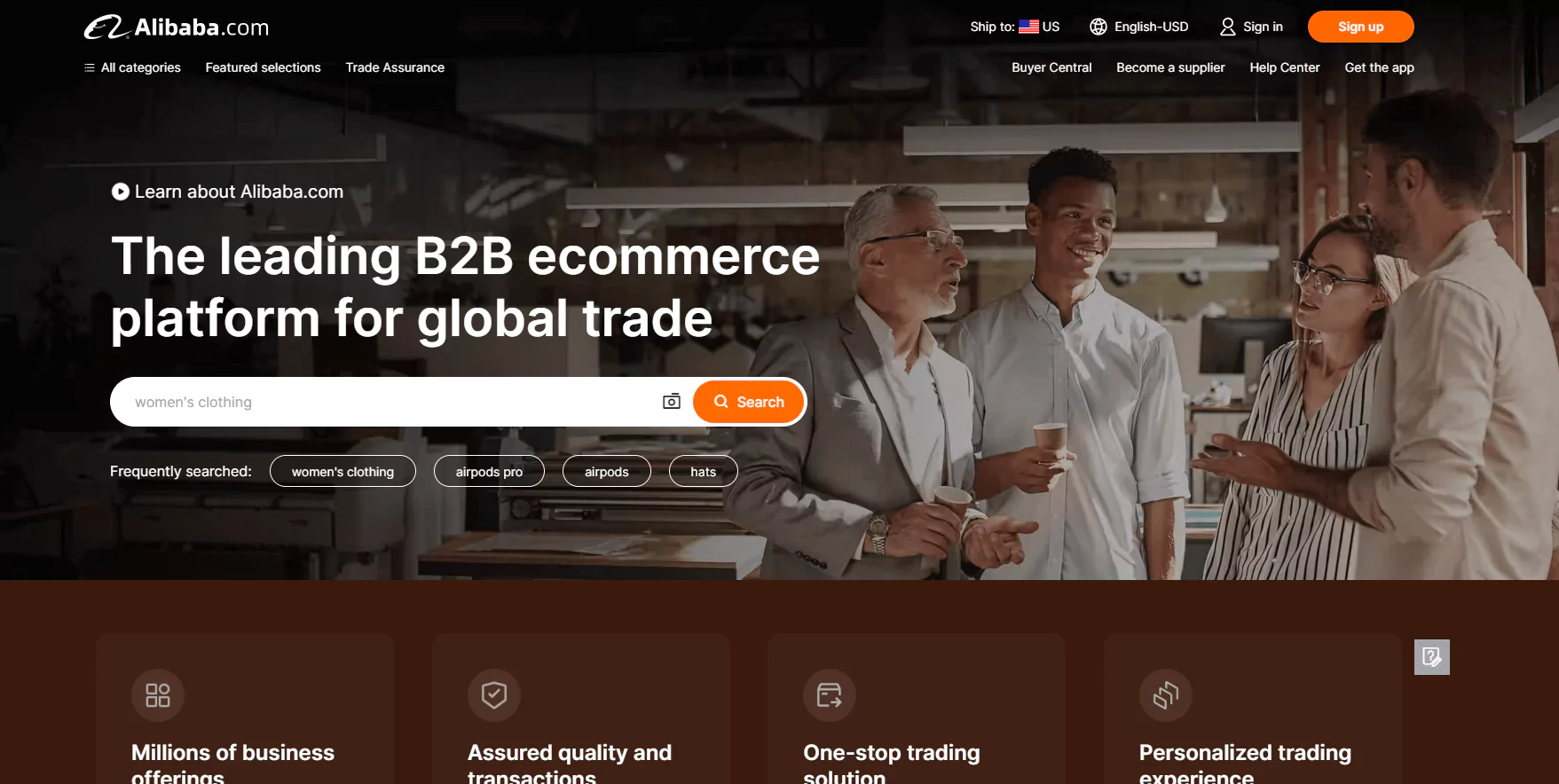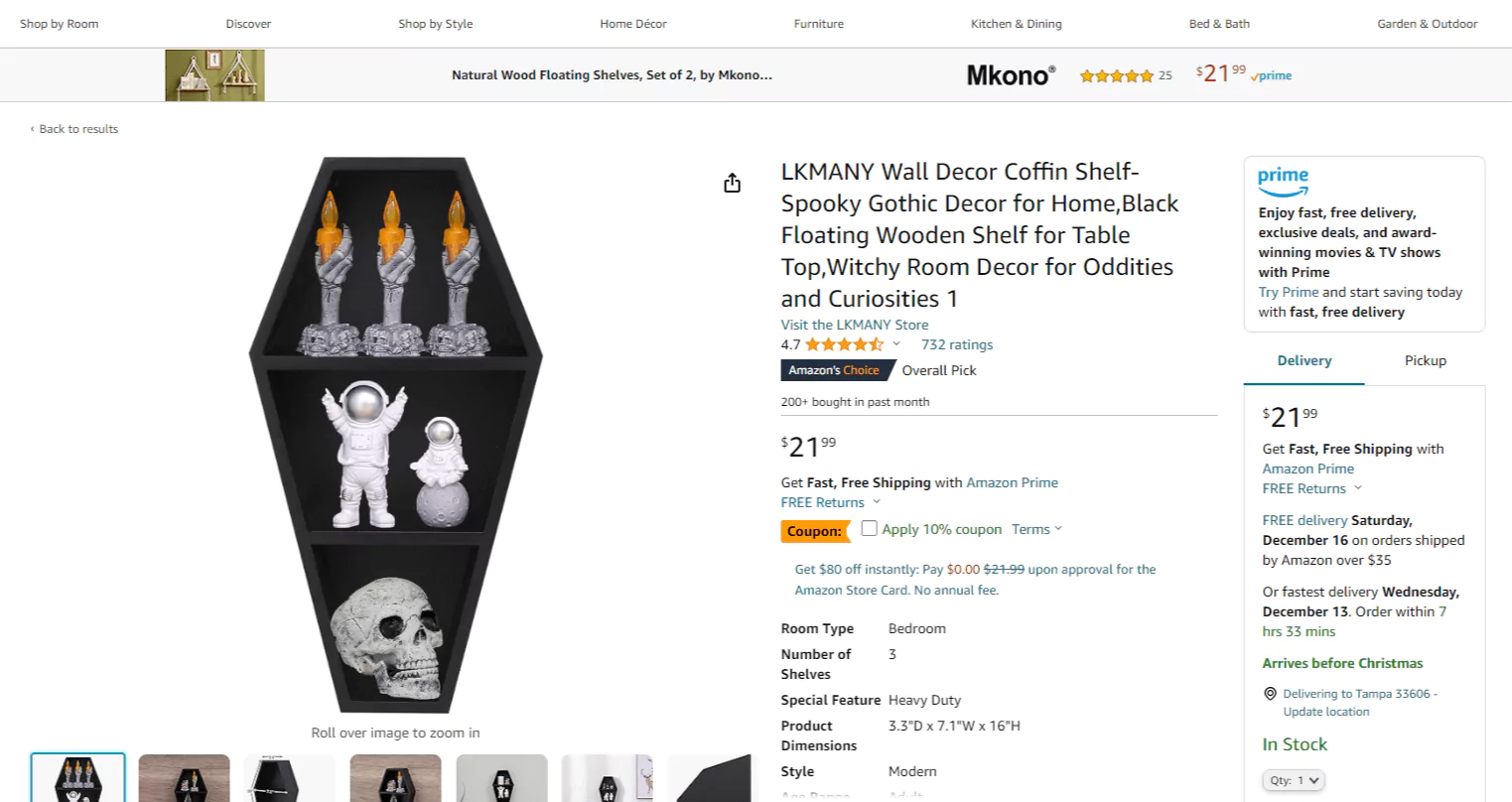
How To Become an Amazon Seller


Table of Contents
- Thinking Like an Entrepreneur
- How Do You Get Started Selling on Amazon?
- How to Become an Amazon Seller
- How to Start Selling on Amazon
- 1. Create an Amazon Seller Account
- 2. Join an Amazon Community
- 3. Determine Your Budget
- 4. Come Up With a Business Plan
- 5. Find a Niche That Works for You
- 6. Find a Product
- 7. Locate a Product Supplier
- 8. Do Amazon Market Research
- 9. Create an Amazon Product Listing
- 10. Optimize Your Listing
- 11. Manage Your Inventory
- 12. Advertise Your Product
- What Are the Common Misconceptions About Selling on Amazon?
- What Software Is Available for Amazon Sellers?
- Frequently Asked Questions
Becoming an Amazon seller is an amazing way to start selling your own products and begin a full-time business venture, tapping into the billions of dollars of e-commerce business conducted daily on Amazon’s Seller Central platform.
Through Fulfillment By Amazon (FBA), there’s no need to go through the hassle of shipping orders, handling returns, etc. This allows sellers on Amazon access to its immense warehouse and shipping infrastructure through Seller Central. Many people will start an Amazon account and begin a lucrative side income. Others will quit their jobs altogether and create a brand, selling private label products through an Amazon account, taking advantage of fulfillment centers around the world.
Thinking Like an Entrepreneur
Before selling a single item it can be helpful to see having orders fulfilled by Amazon as starting a real business. While an Amazon Seller Central Account can create big opportunities for profit and a sustainable passive income, the reality is that with increasing competition, the process of selling with an FBA account is an entrepreneurial endeavor.
Fulfillment centers only carry a portion of the weight. You’ll still need to provide quality inventory, and customer service, create and manage a listing, and stay competitive on Amazon’s marketplace. Also, in addition to Seller Central, starting a Shopify Store can provide opportunities to start selling to more customers, increasing profit margin.
While selling on Amazon may seem overwhelming at first, luckily there is a massive number of tools and resources available that can provide advice on everything from understanding profit margin to warehouse logistics, fulfillment centers, the e-commerce business, shipping costs, getting your own private label products, and how to make a profit.
How Do You Get Started Selling on Amazon?
Signing up for a Fulfillment by Amazon account is an evident early step to start selling on Amazon. The $39.99/monthly fee makes sense if you plan on selling more than 40 items per month, otherwise, Amazon offers a “pay as you go” solution, which would scale with the number of sales being made to cover warehouse and shipping costs.
But even before signing up for a Fulfillment by Amazon (FBA) Seller Central Account new sellers can download Helium 10’s Chrome extension and begin using Black Box to discover keywords and analyze marketplace demand and potential profit margin. With a good sense of potential opportunities, then comes the question of sourcing, setting up listings, and finally making those sales with Amazon’s enormous database of loyal customers.

How to Become an Amazon Seller
Unlike the early days of the internet, it’s no longer required for new e-commerce sellers to create their own unique websites thanks to the rise of third-party selling sites such as Amazon. These third-party platforms, on account of their incredible effectiveness, have made sellers design their businesses around these websites.
If you’re looking to make it big on Amazon or another third-party platform like Walmart, take a look at the 12 steps below that will make it much easier to start selling on Amazon:
How to Start Selling on Amazon

1. Create an Amazon Seller Account
The first thing new e-commerce sellers will have to do is create an Amazon Seller Account. You can pick from a professional or individual account when creating this account. A professional account is great for serious sellers thanks to a wide variety of features, and an individual Amazon Seller Account is better for newer sellers.
2. Join an Amazon Community
A great way to learn the tricks of the trade for Amazon sellers, joining a community also enables you to stay up-to-date on the latest developments in the market. New community members will also be able to ask industry veterans important e-commerce questions whenever they run into trouble.
3. Determine Your Budget
While new Amazon sellers will have to initially invest in Amazon marketing tools and inventory for their business, the overall budget is important, too. It will mainly comprise of how much you can spend on inventory, marketing tools, marketing and advertising, and more).
4. Come Up With a Business Plan
When looking to become an Amazon seller, you should ensure that you have a business plan. The details of this plan should include the products your business will offer, their competitive advantages, how you’ll source these products, and your initial financial projections (found by studying Amazon’s fee structure).
5. Find a Niche That Works for You
Finding an Amazon product niche and sticking with it is very important for all Amazon sellers. The current 2023 most popular Amazon product categories for independent sellers are home & kitchen, beauty & personal care, clothing, shoes & jewelry, toys & games, and health, household & baby care.
6. Find a Product
Selling on Amazon requires new sellers to find quality products that offer a good source of continued revenue. You can find one of these products by using Helium 10’s Black Box. This tool will allow you to identify various potential products that fit your business goals.

7. Locate a Product Supplier
Most businesses selling on Amazon must find a product supplier that can provide large amounts of inventory. Amazon sellers can either hire a manufacturer to produce their inventory to create white-label products, or sellers can buy already-produced products from a wholesaler.
Alibaba is a website that many Amazon sellers use to source their products. When using Helium 10’s Xray, all sellers can find a product that they want to sell via Amazon, and then head over to Alibaba to see available wholesalers at the click of a button.
8. Do Amazon Market Research
It’s important for everyone ready to become a seller on Amazon to analyze available product data on the platform. This includes information such as what customers are searching for, currently available products, top products on Amazon, and how well those products are selling throughout the year.
In addition to the exclusive market research tools that Amazon offers sellers (Amazon’s Product Opportunity Explorer), Helium 10 provides state-of-the-art market research tools for this sole purpose including the popular Market Tracker.

9. Create an Amazon Product Listing
Creating an Amazon product listing is easy. Sellers will need to create their listing on Amazon Seller Central and then input key information that will live in your listing. A product identifier such as a UPC, a SKU number to track inventory, a product description, and other details are the keys to success.
Additionally, if you want to include any images, Amazon provides information on technical details regarding size, as well as more information on other best practices for sellers.
10. Optimize Your Listing
Once your listing is created, you’ll want to optimize it if you want a chance of being successful on Amazon. Sellers will want to use high-quality photos, high-ranking keywords, and other useful information like A+ Content while focusing on both features and benefits in each included bullet point.
For a streamlined listing optimization process, we recommended using Helium 10’s dedicated listing tool, Cerebro (our premier keyword research tool) to help you avoid harmful keyword mistakes while allowing you to take full advantage of the Amazon algorithm to get your product noticed.
11. Manage Your Inventory
By using Amazon FBA (Fulfilled by Amazon), you can store all your inventory at an Amazon warehouse. In contrast, Amazon FBM (Fulfilled by Merchant) requires a seller to ship their products from their location (most usually their home).
While Amazon FBA is more popular for mid-to-large-sized sellers—even with the many FBA fees—, Amazon FBM can be ideal if your inventory is low or if you’re only selling 1 or 2 products.
No matter which fulfillment method you choose, you will need to track the cost, inventory, and sales regularly. Since this can end up taking a lot of time, most Amazon sellers opt to use Helium 10’s Profits tool that does all the above for them (and also measures PPC costs and a seller’s best-selling product, too).
12. Advertise Your Product
Finally, for those wishing to start selling on Amazon, sellers will need to effectively advertise their products. This is most often done through PPC Ads. These are ads on Amazon that you have to pay for each time someone clicks on your item.
While Amazon PPC Ads can get expensive, tools like Adtomic can easily help manage your spending and help ensure that you earn far more from each ad than you spend on them.
What Are the Common Misconceptions About Selling on Amazon?
Among the many big misconceptions when people start selling is believing that the process takes place overnight. Understanding how to get good at listing and business over the long term requires tracking inventory, providing great customer service, and familiarizing yourself with the e-commerce business so you can build a great brand for your Amazon store.
This has never been more true than it is today with options available to sellers like FBA or a Shopify store. The distinguishing factor is no longer building a massive shipping infrastructure, rather the emphasis is on having a great online store with a product that makes the sale on Amazon and gets positive, not negative feedback.
What Software Is Available for Amazon Sellers?
A lot of the heavy lifting even before starting selling on Amazon and setting up a product listing can be done with Google Keyword tracker and Amazon’s own site. Just researching markets, looking for. where competition may be getting negative feedback doesn’t require an Amazon account. When you get your seller account, selling will be easier with a body of research, whether it be wholesale or private label products, fulfilled by Amazon, a Shopify store, or a similar solution.
For anyone with a seller account and Amazon store, taking advantage of Helium 10’s free Chrome extension can provide incredibly in-depth insights into what’s selling, which keywords to shoot for, and how to distinguish yourself from other sellers. Helium 10’s toolkit guides you through the entire process from finding keywords to managing inventory, customers, and product listings.
Frequently Asked Questions
Achieve More Results in Less Time
Accelerate the Growth of Your Business, Brand or Agency
Maximize your results and drive success faster with Helium 10’s full suite of Amazon and Walmart solutions.

